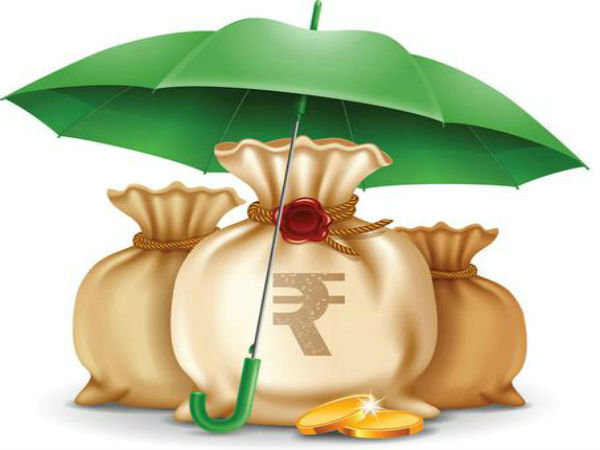8 Countries Where Rupee Is Stronger
India's national currency is the rupee. The rupee is divisible into 100 paise (singular: paisa), yet as of 2019, 1 rupee coins are the smallest denomination in use. The Reserve Bank of India is in charge of the currency's issuance. The Reserve Bank of India administers currency in India and draws its authority from the Reserve Bank of India Act, 1934. The currency code for Rupees is INR.
The Indian rupee, despite being a pretty strong currency in its own right, can make you feel a little destitute when travelling to the United States, Europe, or other rich countries. However, the Indian rupee is stronger than the native currency in other countries.

Indonesia
Indonesia's official currency is the rupiah (Rp). Its ISO 4217 currency code is IDR, and it is issued and regulated by Bank Indonesia. The word "rupiah" comes from the Sanskrit word "rupyakam," which means "silver." Indonesians sometimes refer to rupiah coins informally as "perak," which means "silver" in Indonesian.
The rupiah is divided into 100 sen, despite the fact that rampant inflation has rendered all sen coins and banknotes useless. The Indonesian Rupiah is the country's currency. The IDR to USD rate is the most popular Indonesian Rupiah exchange rate. Rupiahs have the IDR currency code and the Rp currency sign.

Vietnam
State Bank of Vietnam issues it. The dong was also the currency of North and South Vietnam's forerunner republics, replacing the previously used French Indochinese piastre. As of May 2021, the Vietnamese currency is the third weakest circulating currency (after the Venezuelan bolivar and the Iranian rial), with one US dollar equaling 23112.04dong.
The National Bank of Vietnam issued the first banknotes in 1976, with denominations of 5 hao, 1, 5, 10, 20, and 50 dongs. In 1980, 2 and 10 dong banknotes were introduced, followed by 30 and 100 dong banknotes in 1981.
INR 1 = VND 307.25

Cambodia
Cambodia's currency is the Riel. There were two separate riels, the first of which was issued in 1953 and 1975. Between 1975 and 1980, there was no monetary system in place. Since March 20, 1980, a second currency, also known as "riel," has been in circulation.
The Riel is Cambodia's national currency, and its currency code is KHR. The sen, one-hundredth of a Riel, and the kak, one-tenth of a Riel, are its sub-units. The riel was in circulation in Cambodia from 1953 until 1975 and again from 1980 to the present.
INR 1 = KHR 55.30
KHR 1 = INR 0.02

Sri Lanka
The Sri Lankan rupee is usually abbreviated as SLR, despite the fact that its international currency code is LKR. It is the official currency of Sri Lanka's Democratic Socialist Republic, which was previously known as Ceylon.
It's broken down into 100 cents. The Central Bank of Sri Lanka issues it. The rupee is usually denoted by the symbol Rs, however the currency code "LKR" is occasionally used to distinguish it from other currencies with the same name. One, two, five, 10, 25, and 50 cent coins, as well as one, two, five, and ten-rupee coins, are in circulation in Sri Lanka.
10 rupees, 20 rupees, 50 rupees, 100 rupees, 200 rupees, 500 rupees, 1,000 rupees, 2,000 rupees, and 5,000 rupees banknotes are available.
LKR 1 = INR 0.38
INR 1 = LKR 2.65

Nepal
Nepal's primary currency is the Nepalese rupee (NPR). The Nepal Rastra Bank, Nepal's central bank, is in charge of its administration. When referring to the NPR, the most frequent symbol is Rs, though Rp is also sometimes used. The rupee of Nepal is divided into 100 paisas.
In 1932, the Nepalese rupee was created to replace the Nepalese Mohar at a 2:1 ratio. Since 1994, the Nepalese rupee has been pegged to the Indian rupee at a rate of 1.60 = 1; previously, it had been pegged at a rate of 1.45 = 1.[2] In Nepal, one dollar equals 100 rupees.
NPR 1 = INR 0.63
INR 1 = NPR 1.60

Iceland
Iceland's currency is the króna or krona. After Seychelles, Iceland is the smallest country in terms of population to have its own currency and monetary policy. In 1874, the Danish krone was introduced to Iceland, replacing the rigsdaler, the previous Danish currency. Iceland began printing its own currency in 1885.
After the dissolution of the Scandinavian Monetary Union at the outbreak of World War I, and the independence of Iceland from Denmark in 1918, the Icelandic krona was separated from the Danish krone. In 1922, the first coins were released.
ISK 1 = INR 0.57
INR 1 = ISK 1.74

Paraguay
The Guaran is Paraguay's national currency unit. The guaran was divided into 100 céntimos, but céntimos are no longer in use due to inflation. They currently have five, ten, and fifty cents in circulation, which would be converted into one, two, five, ten, twenty, fifty, and one hundred new Guaranes, respectively.
In terms of banknotes, there are 2,000, 5,000, 10,000, 20,000, 50,000, and 100,000 guaranes in circulation.
PYG 1 = INR 0.01
INR 1 = PYG 93.37

Laos
The official national currency of Laos is known as the Lao kip. The kip was first introduced in 1945 and 1946, and it was officially replaced by the French Indochinese piastre in 1952. In the foreign exchange market, the kip is denoted by the symbols and N.1 and is abbreviated as LAK.
Laos' central bank, the Bank of the Lao P.D.R., manages the currency. The denominations of banknotes range from $1 to $100,000. 1 2 One kip equals one hundred att. 1 Because of the country's significant inflation, coins and smaller bills are no longer accepted. 3 On February 28, 2021, $1 (USD) was worth approximately 9,335 LAK.
































